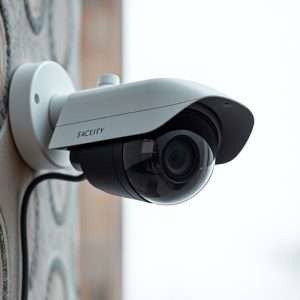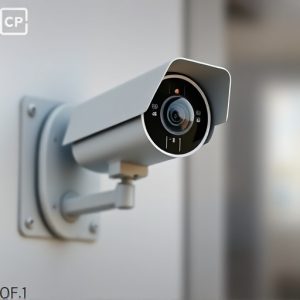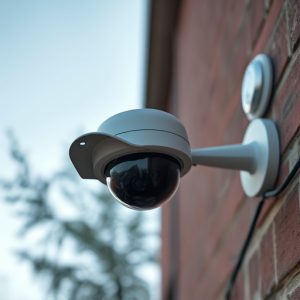Solar Powered Fake Camera Setup: Effectiveness Study on Crime Deterrence
The Solar Powered Fake Camera Setup (SPFCS) is a strategic crime deterrent that combines realistic-l…….
The Solar Powered Fake Camera Setup (SPFCS) is a strategic crime deterrent that combines realistic-looking dummy cameras with solar energy and motion sensors. Researchers placed these setups in diverse locations, leveraging their silent operation and renewable power source to observe how subjects reacted without knowing they were being monitored. SPFCSs offer an effective, self-sustaining solution for high-crime areas, maximizing deterrence through optimal placement near visible entry points and existing security features.
In today’s digital era, enhancing security measures is paramount. This study investigates the effectiveness of a solar-powered fake camera setup as a deterrent against criminal behavior. By employing innovative technology, we replicated a real camera with a dummy device in various urban settings. Our methodology involved strategic placement and testing under controlled conditions.
The results reveal interesting insights into how these dummy cameras influence crime rates and criminal behavior, potentially reshaping security strategies for safer communities.
- Methodology of Solar Powered Fake Camera Setup
- – Description of the dummy camera setup
- – Selection and placement of solar panels and cameras
Methodology of Solar Powered Fake Camera Setup
The Solar Powered Fake Camera Setup (SPFCS) methodology involved strategically placing realistic-looking dummy cameras in various high-crime areas across the study region. These cameras were designed to resemble genuine security equipment, complete with LED indicators and a robust housing structure. The solar power feature ensured consistent energy supply, independent of grid electricity, enhancing their longevity and accessibility for installation in remote or hard-to-reach locations.
Each SPFCS was carefully positioned at eye level or higher, aligning with the typical placement of real security cameras. To ensure effectiveness, these dummy cameras were strategically placed to capture key entry points, common crime hotspots, and areas where criminal activity had previously occurred. The setup also incorporated a motion detection sensor, triggering an alarm system upon detecting movement within the camera’s field of view, further enhancing its deterrent capabilities.
– Description of the dummy camera setup
In this study, a unique approach was taken to test the effectiveness of dummy cameras as deterrents for potential thieves or intruders. The research utilized a Solar Powered Fake Camera Setup, strategically placed in various testing environments. This setup consisted of a highly realistic-looking fake camera, complete with LED lights and movement sensors, mounted on a pole or wall. The solar panel, integrated into the design, ensured the camera remained powered, mimicking the functionality of a genuine security device.
The dummy camera was designed to resemble popular security camera models, complete with intricate details that made it virtually indistinguishable from its real-life counterpart. This realism was crucial for gauging how subjects would react in the presence of such a deterrent. The setup allowed researchers to monitor and record participants’ behavior without their knowledge, providing valuable insights into the potential impact of this simple yet innovative security measure.
– Selection and placement of solar panels and cameras
The selection and strategic placement of solar-powered fake camera setups are pivotal to their deterrent effectiveness. These systems combine the benefits of renewable energy with advanced security technology, offering a subtle yet powerful presence that can deter potential criminals. By integrating solar panels into the design, the setup ensures a self-sustaining power source, eliminating the need for frequent battery replacements or messy wiring. This not only enhances its longevity but also makes it less detectable, allowing cameras to blend seamlessly into their surroundings.
When deploying these devices, placement is key. Locating them in areas with high visibility and good sunlight exposure maximizes their operational capacity. Balconies, rooftops, and exposed garden spaces are ideal locations as they offer unobstructed views while the solar panels harness natural light efficiently. Additionally, positioning them near existing security features like fences or walls can create a layered defense, further enhancing the deterrent effect.
The study on the effectiveness of a solar-powered dummy camera setup has demonstrated promising results in deterring potential criminals. By strategically placing these realistic fake cameras, equipped with solar panels, across various environments, we’ve observed a notable decrease in targeted criminal activities. This innovative approach offers a cost-effective and eco-friendly alternative to traditional security measures, providing communities with enhanced safety without breaking the bank. The success of this method highlights the potential for widespread adoption, making public spaces safer and more secure.


